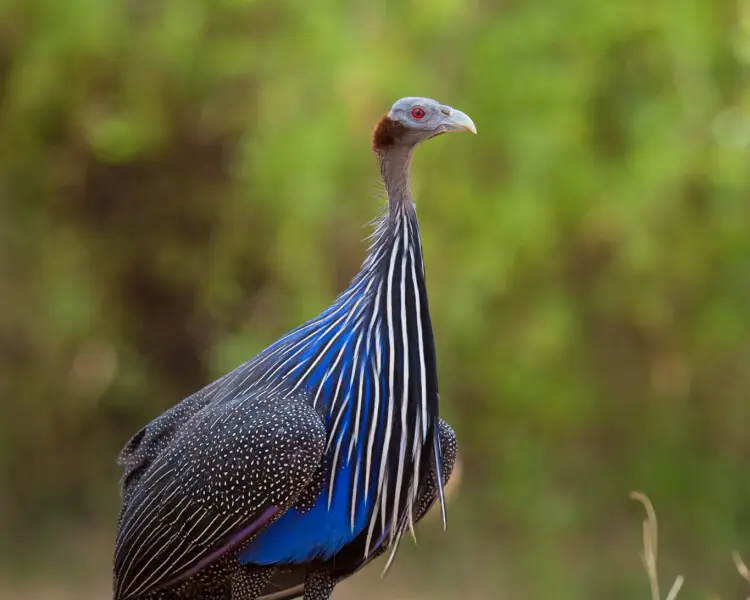VULTURINE GUINEAFOWL
Acryllium vulturinum
The vulturine guineafowl, which gets its name from its bald head like a vulture’s, lives on the dry savannah, in semi-desert areas and the thorny deserts of southern Uganda and Somalia, east Kenya and northeast Tanzania.
They normally live in small groups, spending the whole day on the ground and only go up into the trees to sleep or escape their predators.
 NATURAL HABIT
NATURAL HABIT
It is distributed in Africa, from south and east Ethiopia, Somalia and Kenya to northeast Tanzania, where it prefers arid and semi-arid regions like savannahs.
Appearance
The vulturine guineafowl is a large (61–71 centimetres (24–28 in)) bird with a round body and small head. It has a longer wings, neck, legs and tail than other guineafowl. The adult has a bare blue face and black neck, and although all other guineafowl have unfeathered heads, this species looks particularly like a vulture because of the long bare neck and head.
The slim neck projects from a cape of long, glossy, blue and white hackles. The breast is cobalt blue, and the rest of the body plumage is black, finely spangled with white. The wings are short and rounded, and the tail is longer than others in the family Numididae.
The sexes are similar, although the female is usually slightly smaller than the male and with smaller tarsal spurs. Young birds are mainly grey-brown, with a duller blue breast and short hackles.

Habits and Lifestyle
The vulturine guineafowl is a gregarious species, forming flocks outside the breeding season typically of about 25 birds. This species' food is seeds and small invertebrates. This guineafowl is terrestrial and will run rather than fly when alarmed. Despite the open habitat, it tends to keep to cover, and roosts in trees. It makes loud chink-chink-chink-chink-chink calls.
It breeds in dry and open habitats with scattered bushes and trees, such as savannah or grassland. It usually lays 4–8 cream-coloured eggs in a well-hidden grass-lined scrape.
.png)
Comments
Post a Comment